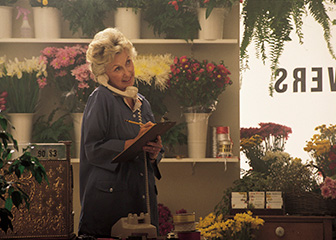
Floral designers grow or order flowers from wholesalers to ensure an adequate supply to meet customers’ needs.
Floral designers, also called florists, cut and arrange live, dried, or silk flowers and greenery to make decorative displays. They also help customers select flowers, containers, ribbons, and other accessories.
Duties
Floral designers typically do the following:
- Grow or order flowers from wholesalers to ensure an adequate supply to meet customers' needs
- Determine the type of arrangement desired, the occasion, and the date, time, and location that each arrangement is needed
- Recommend flowers and greenery for each arrangement
- Consider the customer’s budget when making recommendations
- Design floral displays that evoke a particular sentiment or style
- Answer telephones, take orders, wrap arrangements
Floral designers may create a single arrangement for a special occasion or design floral displays for rooms and open spaces for large scale functions, such as weddings, funerals, and banquets. They use their sense of artistry and knowledge of different types of flowers to choose the appropriate flowers for each occasion. They need to know what flowers are in season and when they will be available.
Floral designers must know the color varieties of each flower and the average size of each type of flower. They might calculate the number of flowers that will fit into a particular vase, or how many rose petals are needed to cover a carpet.
Floral designers also need to know the properties of each flower. Some flowers, like carnations, can last for many hours outside of water. Other flowers are more delicate and wilt more quickly. Some plants are poisonous for certain types of animals. For example, lilies are toxic for cats.
Floral designers use all their knowledge to recommend flowers and designs to customers. After the customer selects the flowers, the designer arranges them in a visually appealing display.
Although more complex displays must be ordered in advance, designers will often create smaller bouquets or arrangements while customers wait. When they are responsible for floral arrangements for an occasion, such as a wedding or banquet, floral designers usually set up the floral decorations just before the event.
Floral designers also give customers instructions on how to care for flowers, including the ideal temperature and how often the water should be changed. For cut flowers, floral designers will often provide flower food for the customer to take home.
When not serving customers, floral designers order new flowers from suppliers. They process newly arrived flowers by stripping leaves that would be below the waterline. They cut new flowers, mix flower food solutions, fill floral containers with the food solutions, and sanitize workspaces. They keep most flowers in cool display cases so the flowers stay fresh and live longer.
Some designers may have long-term agreements with hotels and restaurants or the owners of office buildings and private homes to replace old flowers with new flower arrangements on a recurring schedule—usually daily, weekly, or monthly—to keep areas looking fresh and appealing. Some work with interior designers in creating these displays. For more information, see the profile on interior designers.
Floral designers who are self-employed or own their shop must also do business tasks. Some hire and supervise staff. They must keep track of income, expenses, and taxes—or hire others to help with those tasks.











